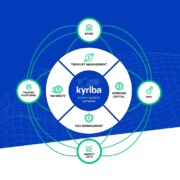Cash flow forecasting (CFFC)
23-05-2016 | by Udo Rademakers |
In recent years and months, we have seen quite a few companies coming into liquidity problems, leading in worst case scenario to insolvencies. This brings us to the question: how important is cash flow forecasting? How to anticipate adequately and to avoid facing “surprises” at the last moment and how should you implement it?
The Cash flow forecast (CFFC) estimates the timing and amounts of cash in- and outflows over a specific period and in different time buckets (day, week, month, year). It provides you with an actual overview of the cash position and with a forecast.
Why is a cash flow forecast important?
- based on the CFFC you can assure the timely payment to your suppliers, employees and finance providers (at all times as you want to avoid liquidity problems!)
- it can act as a management tool and “early warning system”
- the analysis of actuals versus forecast helps you to identify possible problems (e.g. delay in invoicing to customers, late payments to suppliers)
- the analysis of forecasts versus forecast helps you to identify the trend and to understand the business much better
- the aggregated information shows if you are able to cover your financial obligations towards finance institutions/investors in the longer term and if your cash flow could meet the covenant targets or whether there will be a breach of credit facility limits. In case of a “cash rich” position it helps you to decide how much money and for which period you could invest it
- A CFFC helps to identify foreign exchange exposures and it supports hedging decisions.
How to implement a CFFC?
Depending on the turnover, leverage, growth, systems, number of employees, internationality and currencies, the approach (and time effort) should fit the size of the organisation.
Cash flow forecasting often doesn’t have priority within organisations. However, as a treasurer, we realize the added value and need of it but also do realize that making a good CFFC could cost a lot of (time) effort. So how could we get a timely and reliable CFFC process in place without using all precious time of the finance managers?
- automate where possible: use either sophisticated spreadsheets, but even better, a sophisticated web based application or use the functionalities of your Treasury Management System (and fine-tune it)
- import centrally (via MT940) the actual banking balances where possible
- use your (invoice payment due dates) AP/AR data for the short term FC
- let fill out the “gaps” by finance managers based on their business knowledge
- make sure everyone reports the latest data in time with an explanation of high impact changes and actual versus realisation differences
- undertake actions where needed
- consolidate the data, analyse the information and report the highlights to the senior management on a regular basis.

Treasury Consultant










